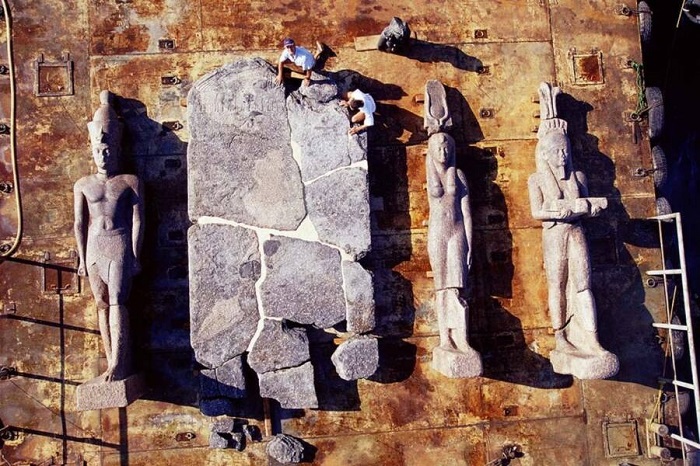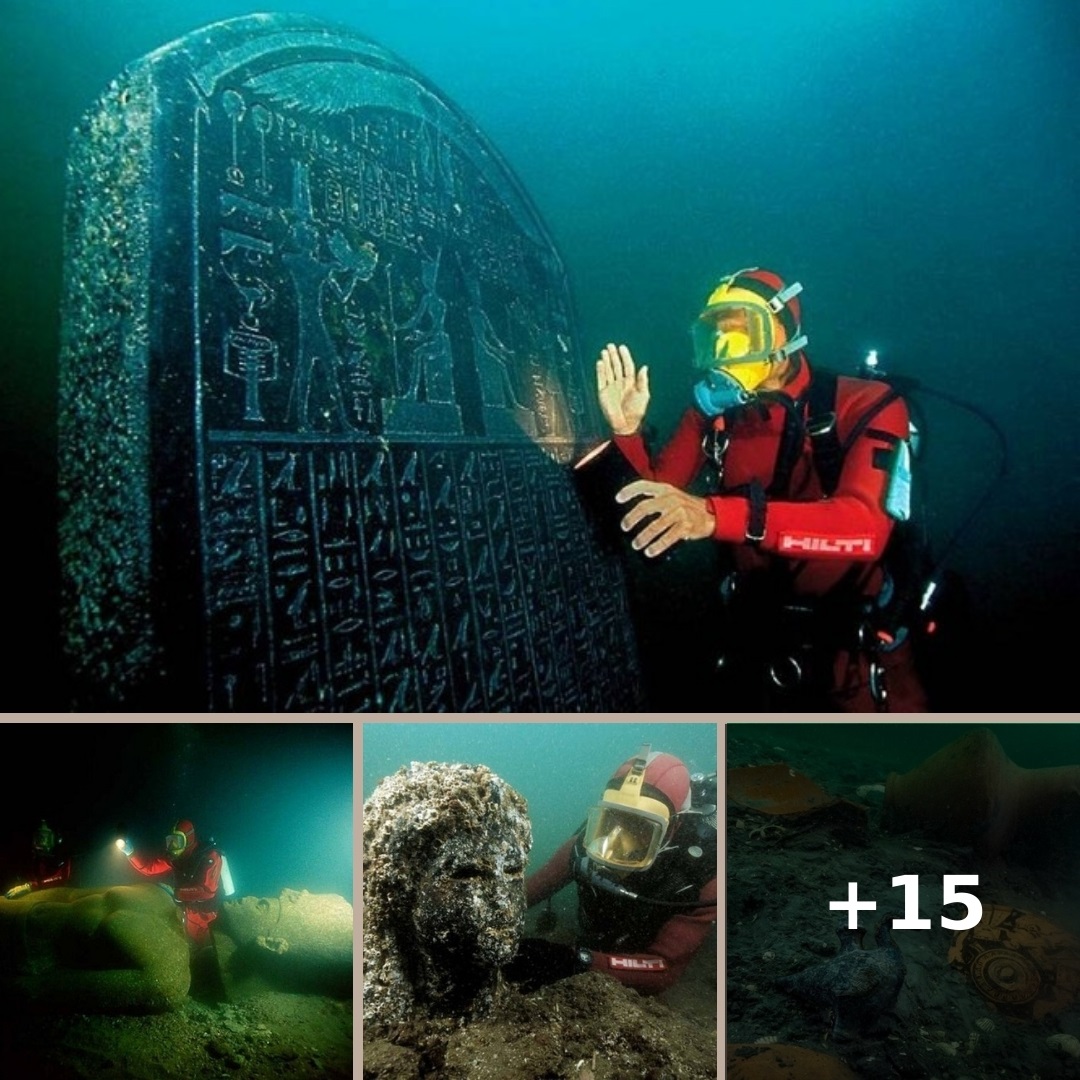Known as Thonis to the Egyptians and Heracleion to the Greeks, Thonis-Heracleion was a bustling city at the mouth of the Nile River that served as the region’s biggest port for centuries before it sank.
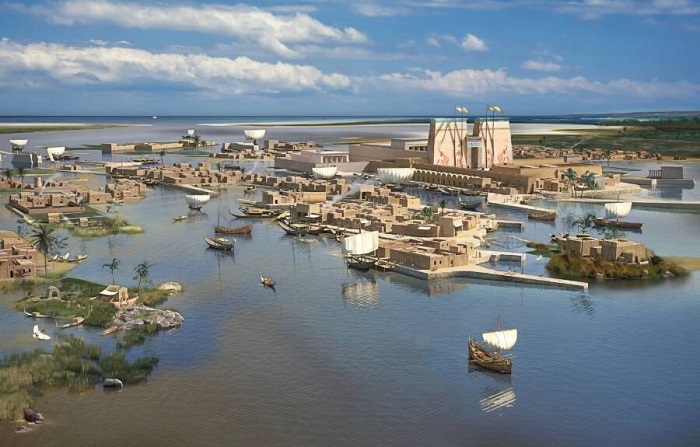
Long ago, the Egyptian city of Thonis-Heracleion sank into the Mediterranean Sea — and into the misty realm of legend. For more than a millennium, its memory faded as waves lapped overhead until the world wondered if the once proud port, which was known as Thonis to the Egyptians and Heracleion to the Greeks, had ever really existed at all.
The resounding answer came in the 20th and 21st centuries, as audacious divers began to find evidence of Thonis-Heracleion’s lost might. Researchers spent years mapping the seafloor, where the sunken city was covered by a thick layer of sediment. In 2000, a diving team began to uncover what remained of Thonis-Heracleion in the form of coins, pottery, and jaw-dropping statues.
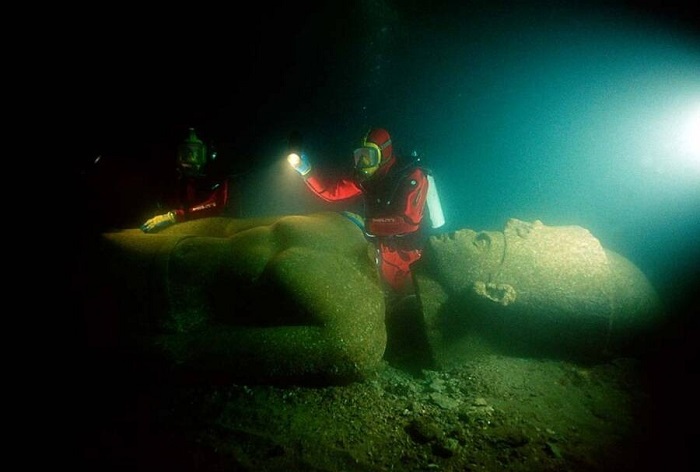
So, how did Thonis-Heracleion tumble into the sea all those years ago? And what exactly have divers found in its murky depths?
The Rise And Fall Of Thonis-Heracleion
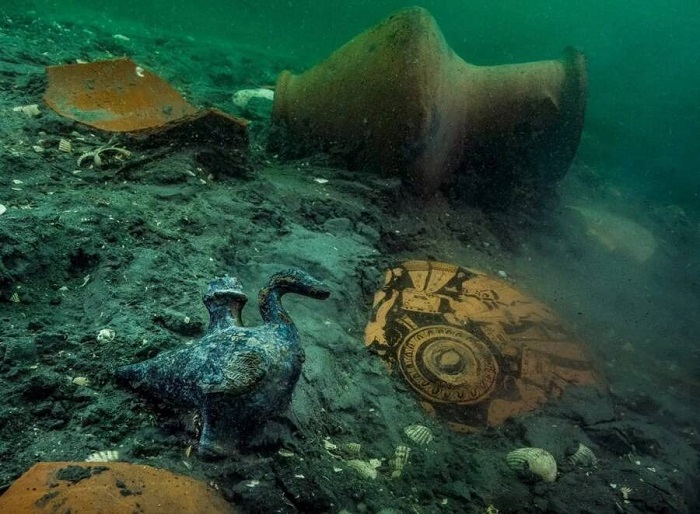
Likely founded around the 8th century B.C.E., Thonis-Heracleion long reigned as Egypt’s most important port. Perched on the Mediterranean Sea in present-day Abu Qir Bay, the city was the first stop for ships bringing goods from around the ancient world to Egypt.
It was also a curious place. As The Guardian reported in 2016, Thonis-Heracleion was a seaside city in every sense of the term. It was a tangle of canals, harbors, and wharves strung together by ferries, boats, and bridges.
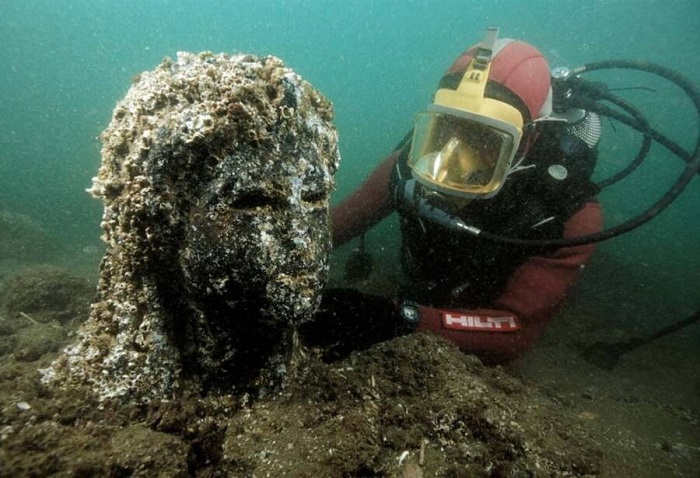
It was certainly a dynamic place at its peak, but almost all descriptions of Thonis-Heracleion have been lost to the ages. Instead, it exists mostly in the realm of myth. Greek historian Herodotus described Thonis-Heracleion as the spot where Heracles first arrived in Egypt and as the place where Paris and Helen of Troy visited before the start of the Trojan War.
As the centuries passed, however, Thonis-Heracleion’s fortunes changed. In 331 B.C.E., Alexander the Great founded the city of Alexandria 15 miles to the southwest. This grand city, which soon boasted the famous Lighthouse of Alexandria, became Egypt’s preeminent port.
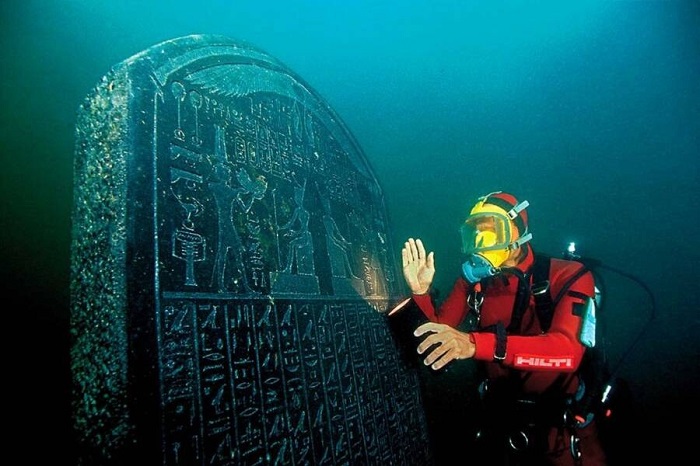
And as Alexandria rose, Thonis-Heracleion sank — almost literally. The city was besieged by a series of natural disasters, including earthquakes, tsunamis, and rising sea levels. At the end of the second century — probably around 101 B.C.E. — its central island slid into the sea alongside the city’s main temples. The hard clay beneath them had simply turned into liquid.
By the eighth century C.E., Thonis-Heracleion was gone entirely. All that existed of the once proud port city was scraps of legend, which led some to believe that it had never existed at all.
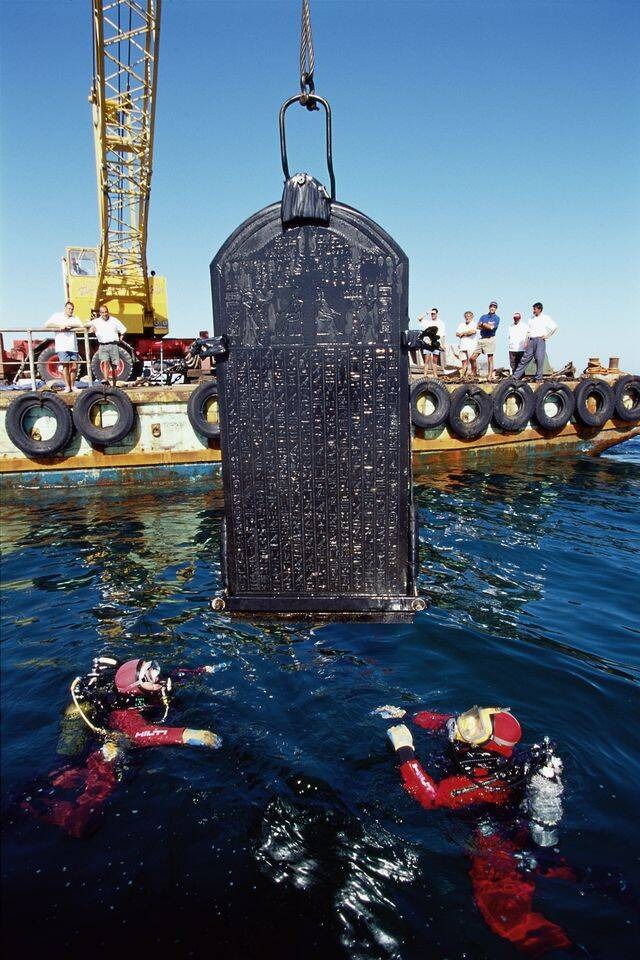
But Thonis-Heracleion was no Atlantis.
The Rediscovery Of ‘Venice Of The Nile’
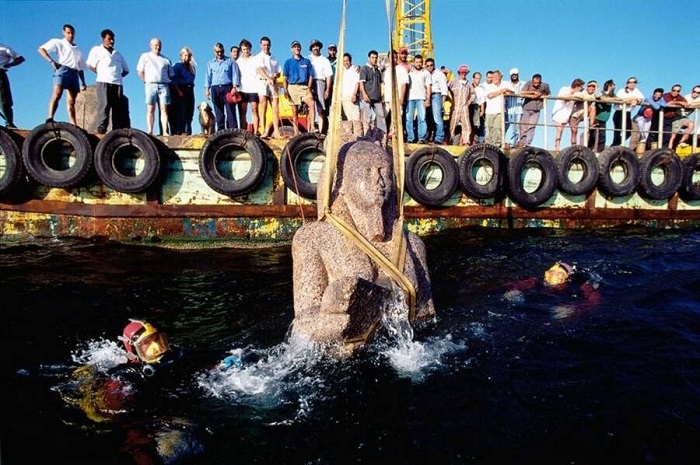
Centuries passed. Thonis-Heracleion faded into myth. Archaeologists who searched for the lost city looked on land, which meant that it remained hidden.
“For these early archaeologists it was inconceivable that a site could be found underwater several kilometers offshore,” Franck Goddio, the founder of the European Institute for Underwater Archaeology (IEASM), which originally located the ruins of Thonis-Heracleion, explains on his website.
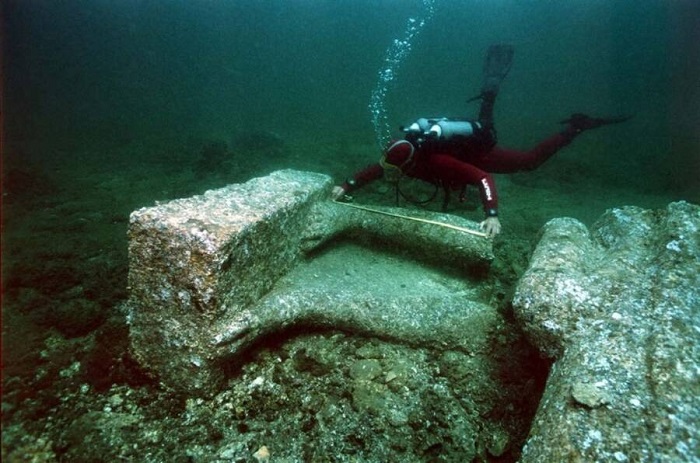
He adds: “[The] cities are also covered by several meters of sand and sediments and it is perfectly possible to dive down to the seabed and not know that you are swimming over the remains of an important ancient city. You can imagine that it was extremely difficult to find any traces before technical equipment was developed with which you could locate them.”
In the 1990s, IEASM and the Egyptian Supreme Council of Antiquities were able to locate Thonis-Heracleion about four miles off the coast at a depth of around 30 feet. In 2000, divers started exploring the site.
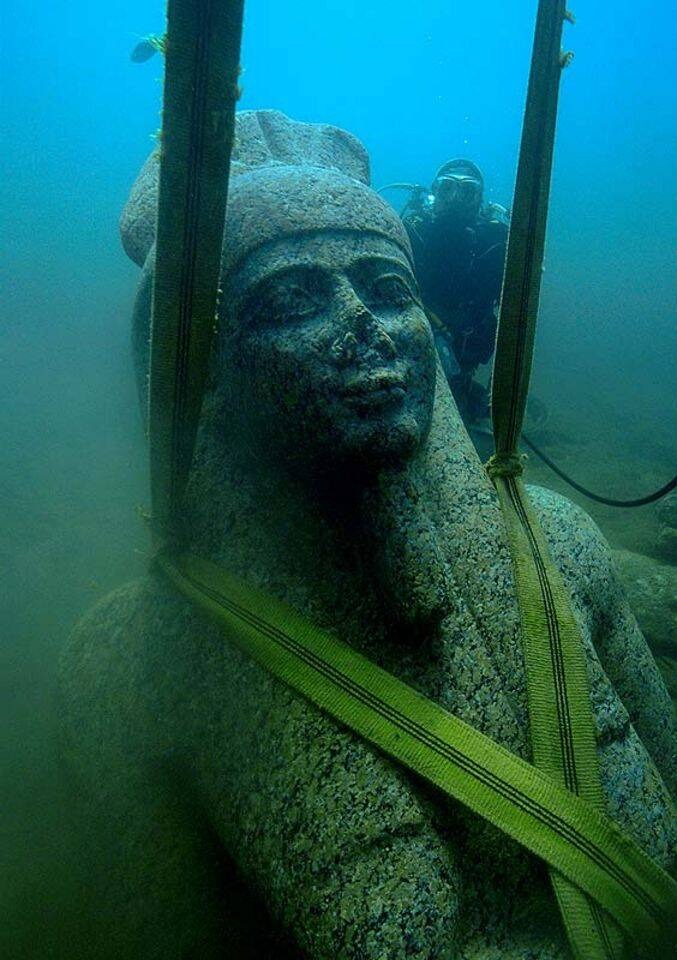
What they found was nothing short of incredible.
Long hidden beneath the waves were remains of buildings, statues that stretched more than 15 feet tall, goblets, sarcophagi, stone slabs inscribed with hieroglyphics, war helmets, perfume bottles, anchors, jewelry, coins, and much more.
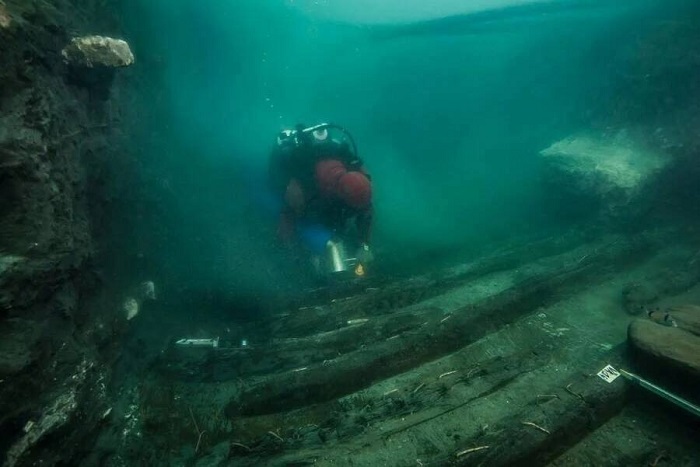
Some of the most impressive statues were those of Hapi, the god of fertility, which once guarded Thonis-Heracleion’s port, and Cleopatra III, one of Egypt’s second-century queens. (Not to be confused with her more famous descendant, Cleopatra VII, whose death heralded Roman control of Egypt).
In recent years, other diving expeditions to the underwater city have also uncovered an ancient Greek military vessel — which was presumably moored off the coast of the city when the Temple of Amun-Gereb collapsed — and a fourth-century B.C.E. Greek funerary complex.
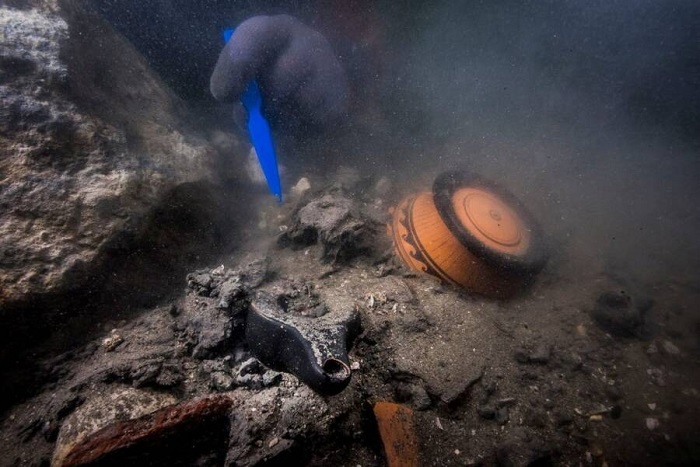
But Goddio notes that just a small percentage of the site, which is contained in an area of about six miles by nine miles, has been uncovered.
As exploration continues, it’s very likely that Thonis-Heracleion will offer up more incredible treasures.
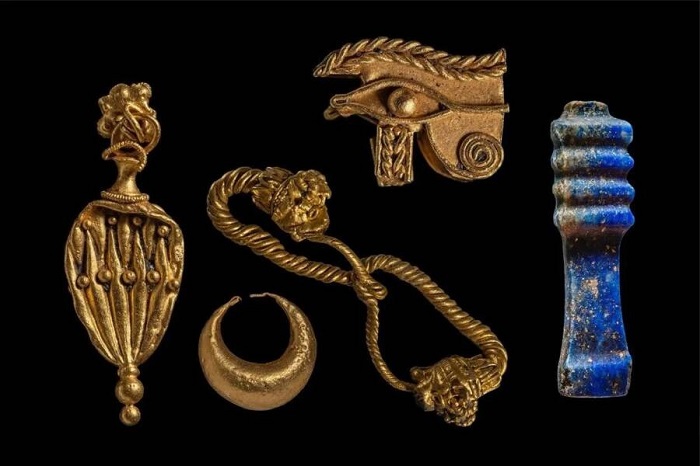
Until then, peruse the gallery above to see what’s been found at the site. And to learn more about Franck Goddio and his discoveries, check out his website or his YouTube page.
After reading about the lost — and found — city of Thonis-Heracleion, discover the stories of these stunning underground cities from around the world. Or, look through these fascinating facts about life in ancient Egypt.
